When it came to buying my first wig, I got lucky. I was in a wig store, saw a gorgeous wig on a mannequin, put it on, and that's all it took. It was perfect. The shop owner said to me "You picked the best wig in our store. It's a 100% hand-tied monofilament top with an invisible lace front. It's the most expensive wig we sell!" She stressed those words... "One... hundred.... percent..... hand.... tied..... monofilament..... top " making eye contact with me to stress the point. But, to be honest, the words "100% hand-tied monofilament top" meant nothing to me. I just loved the way it looked. It looked natural! It looked like my own hair. It felt like me, not me in a wig (and whatever that would feel like wasn't something I ever wanted to know about).
But, leave it to me to pick out the most expensive wig in the store. It was over $400, but it was worth every penny. I had an office job, and as Vice President of the company, I needed to have a professional appearance. My hair loss had gotten to the point where I could no longer hide it. Hair is something everyone notices at first glance. One thing was for sure, I didn't want anyone to know I was wearing a wig. I rationalized the purchase by telling myself I would spend $400 for a nice business suit and shoes, and this was something I'd be wearing every day.
No one ever knew it was a wig. I received more compliments on my hair when wearing that wig than I'd ever gotten with my own bio hair. Sometimes I'd tell the person it was a wig (but not always!) And to those people who I told, I've usually watched them stare right at my hairline, and looking deep into my part, and then look me in the eye and say "I don't see it! I just can't believe that's a wig!" And that's because the cap construction matters! The way the fibers are sewn or hand-tied into the cap makes all the difference in the world.
Hand-tied wigs and monofilament caps offer the most natural look and movement, but it also affects the price in very much the same way you would expect to pay more for someone to come and paint your entire house, than just one bedroom. And that's the difference between a $100 wig, and a $400 wig (and then there's human hair, but that's a whole other ballgame!) It's about the labor involved, and how much time is spent creating each wig. In a hand-tied wig, each fiber is individually tied to the base one strand at a time. In machine sewn wigs, the strands are machine sewn to wefts, and the wefts are sewn to the cap. A machine wefted wig takes approximately 6-10 hours to create, but a hand-tied wig will take 3 to 4 times that. And that's exactly the price difference: from approximately $100 to the $300-$400 mark. But is the extra labor and cost worth it? You tell me. Here's looking down the part of a hand-tied monofilament wig. Do you see how the scalp shows through?
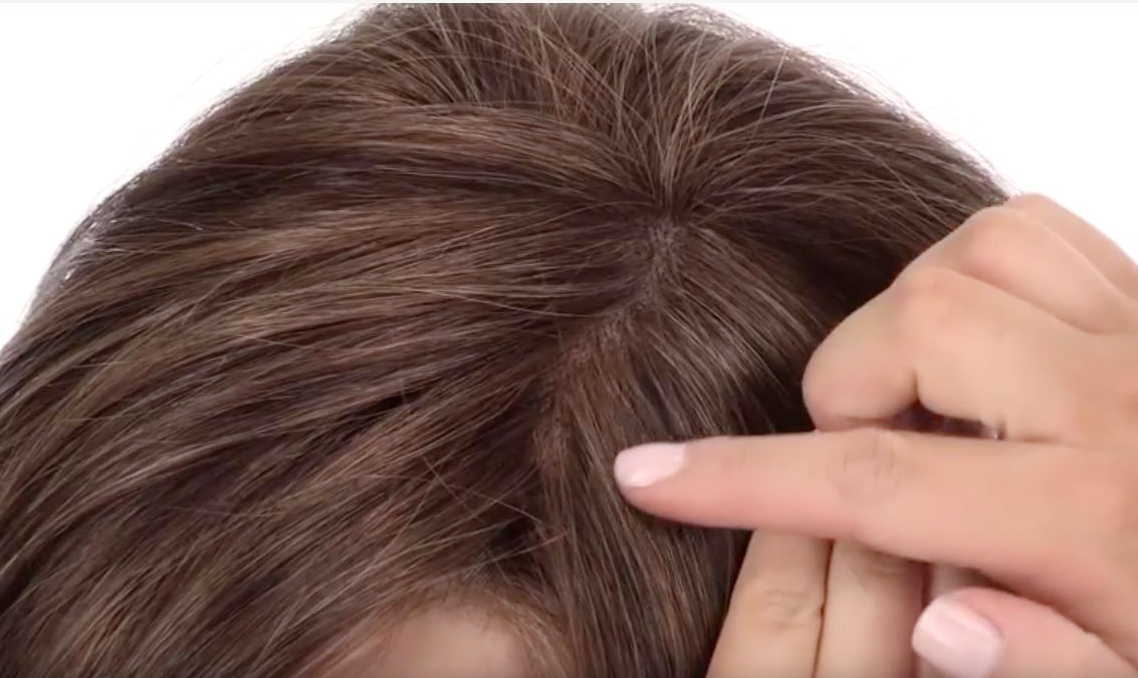
And although you may not be able to tell from that shot, the hand-tied hair lays so naturally that it looks and moves like real hair. Here's an illustration of the wig cap for that wig:
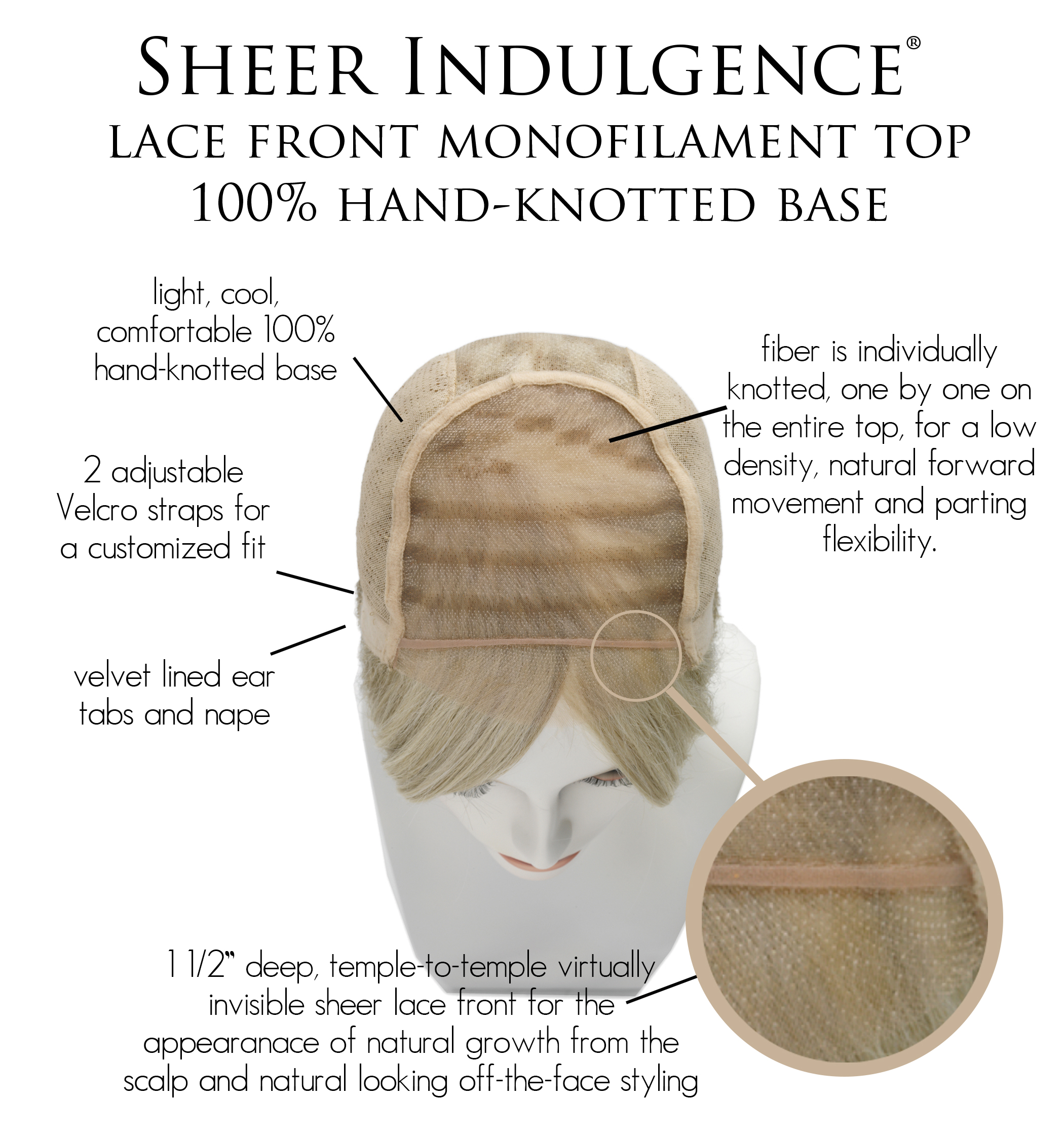
And now, let's look at another type of wig. This is a basic cap wig by a different manufacturer, and beside it is the photo of the cap construction.

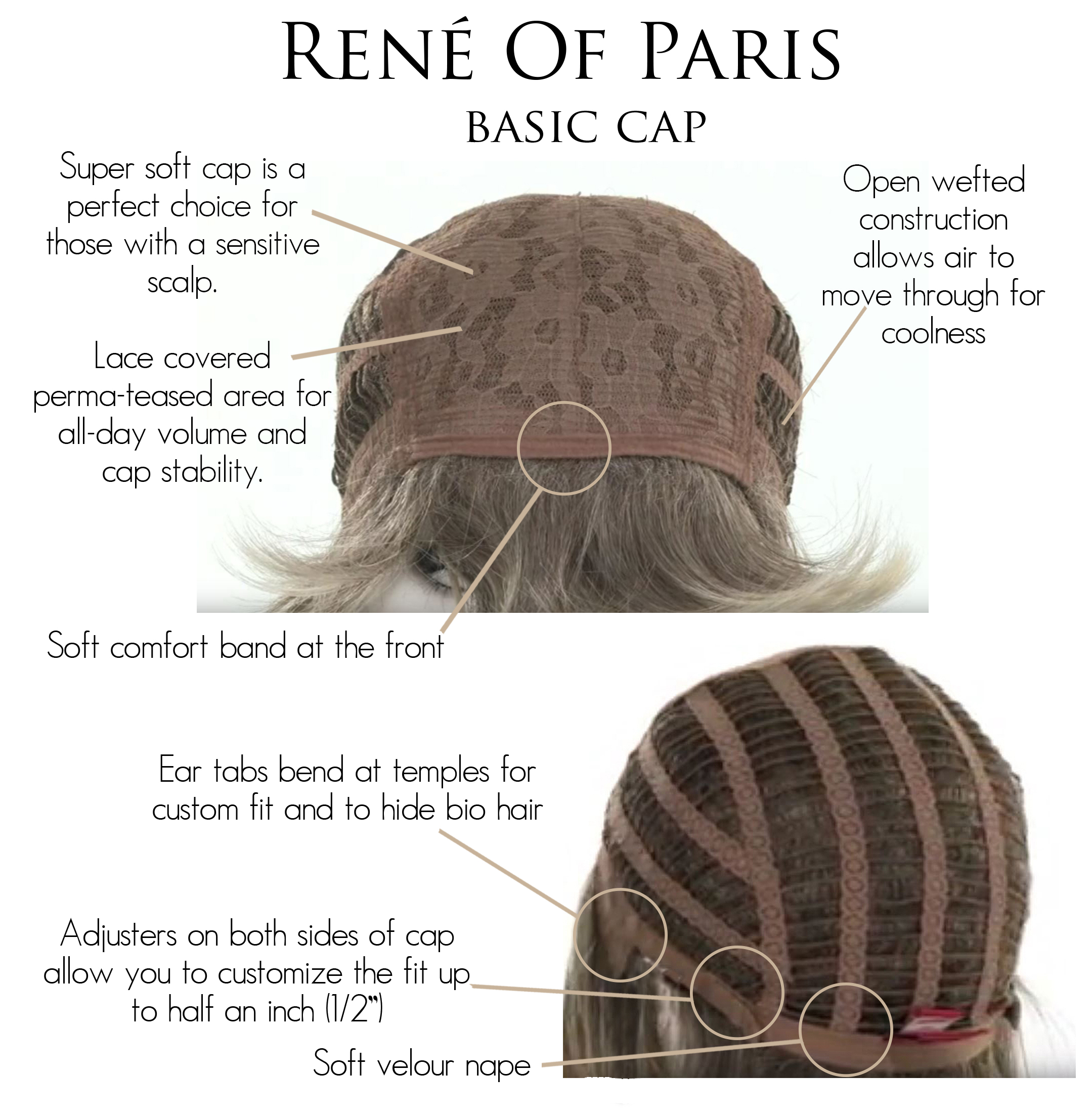
Would you have noticed all the perma-tease along that part if you were shopping online for that wig? Where's the part? If you could actually get past all the permatease, you wouldn't see your scalp peeking through, you'd see the wig wefts. This particular wig manufacturer uses permateased hair to hide the wig wefts, and to give extra body and dimension to the wigs. Some customers love this! And others shriek in horror at the idea that their wig "looks like a wig". There's an ancient Babylonian saying: "Once you've worn a monofilament wig, you'll never be able to wear a basic cap." Okay, that's actually not an ancient Babylonian saying, but it's still a true statement... you can go from basic cap to monofilament, but if you've worn a monofilament wig, you'll be hard pressed to find a basic cap wig that you'll really love.
Because hand-tied monofilament wigs are pricier, there's a middle-of-the-road solution, the monofilament part. In these wigs, instead of the entire top of the wig being hand-tied, only the part is. It gives the look of natural growth from the scalp, but you can't really move the part around, though you can change it slightly, like to a zig-zag part, or just a little crooked. I have several monofilament part wigs, and I love them for their lower price point, but to still give me the look of a monofilament cap. If you look at the clear netted area of this photo, you'll see the hand-tied monofilament part. The price is much less because it's a much smaller area that has to be hand-tied one strand at a time.
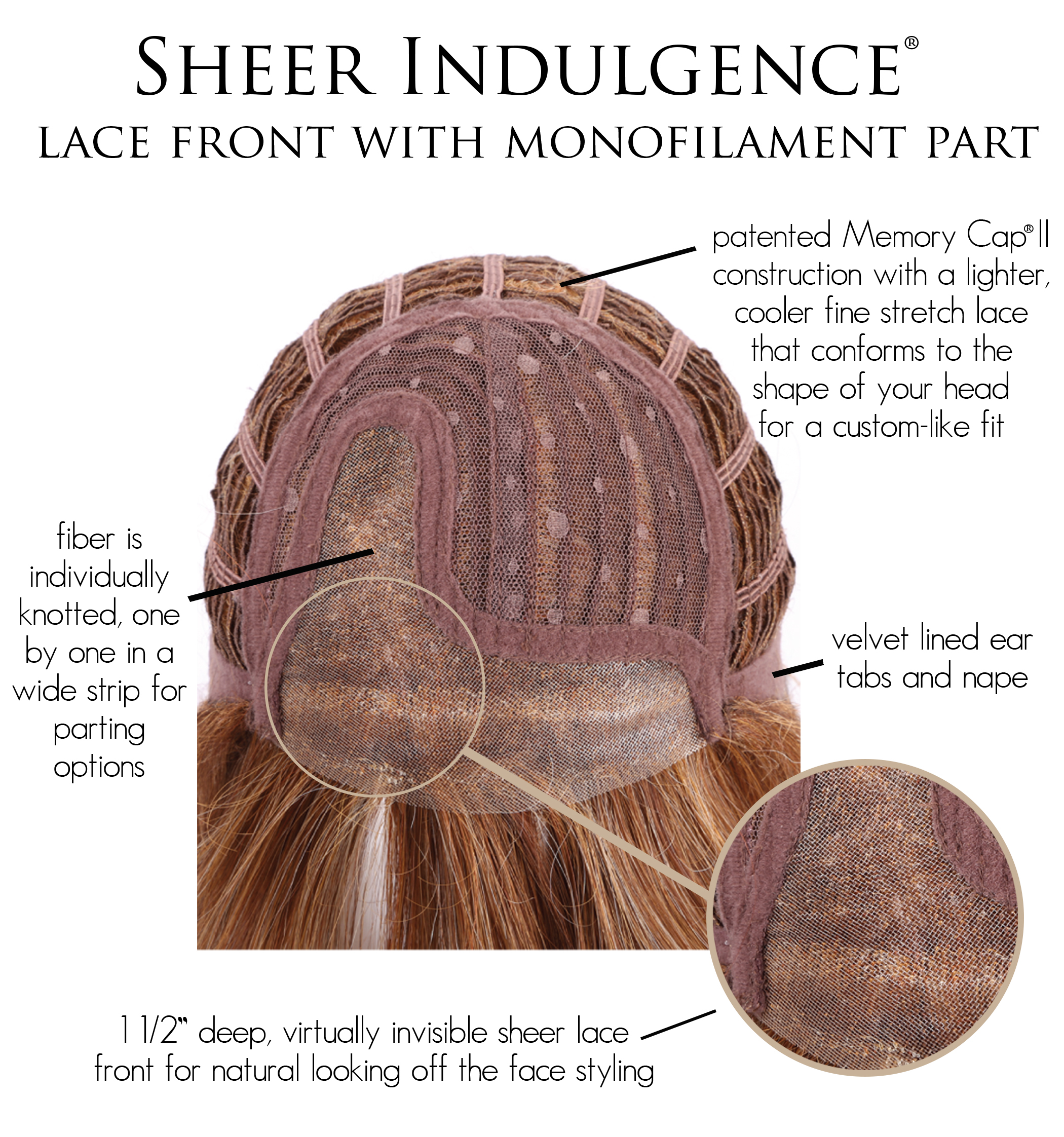
Now let's look at hairline. Here's your lace-front wig (this is the same wig as the hand-tied wig shown above).
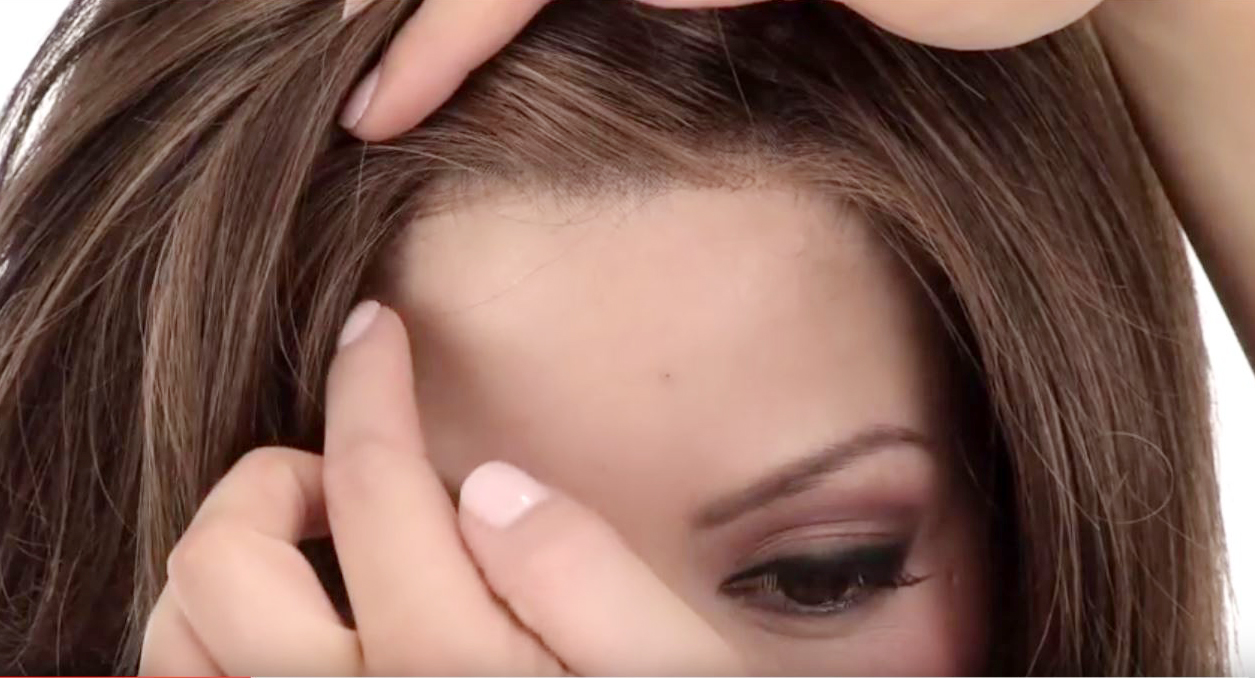
Do you see how it looks like the hair is growing from the scalp? Lace front wigs allow you to pull your hair back, or side-sweep your bangs and it will still look natural. Wigs without a lace front don't look this natural up close, and most have bangs to help hide the problem.
And then there's comfort. If you have a sensitive scalp, or are undergoing chemotherapy and/or radiation, the hand-tied monofilament wigs are extra soft and comfortable to wear. Some brands even have double monofilament that is as soft as silk against the head. These wigs will, however, be a little warmer to wear, as the air won't travel through as well as an open wefted cap. There are lots of different wig constructions for different purposes. Because air travels better through open wefted/basic caps, they're a great choice for a work-out wig.
Here's the full image of that gorgeous lace front, 100% hand-tied monofilament wig I highlighted above. It's the Upstage by Raquel Welch. And this wig is actually a heat-friendly wig. But, that's a whole other blog post! I'll cover that soon.

So now you have an idea of the most important aspect behind the cost of the wigs that you see online. If a wig is in the low $100 price point, it's probably a basic cap (open wefted, or "capless"). If it's in the $200 price point, it's either a lace front, or a mono part wig. If it's a little higher ... nearing the $300 price, it's probably a lace front plus monofilament part. And once you get over $300, it's a hand-tied monofilament cap with or without a lace front. If I see a wig that's over $500, I can safely assume it's some type of human hair wig, and then the prices go up from there according to the quality of the hair and the cap construction.
I hope this blog post helped make some sense of wig prices, and cap construction, and why it's so important when shopping for a wig. Don't just shop by price, and by the pretty pictures. Read those wig features, and study those cap construction illustrations. And if you have any questions, leave a comment below, or write us at [email protected]












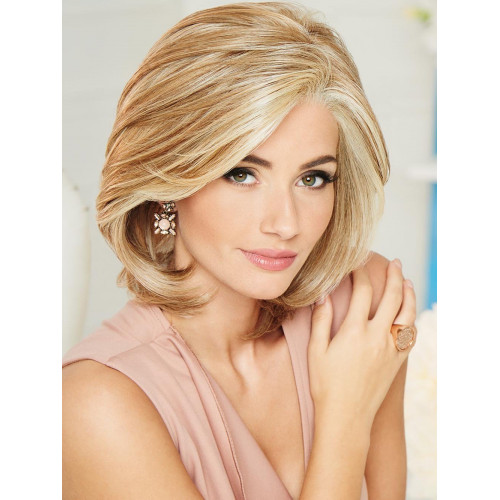

6 Comment(s)
I have a friend who loves to buy and wear wigs. I think this blog helps her.
Choosing a wig can be a game-changer. Despite its price, the 100% hand-tied monofilament top with an invisible lace front brought back confidence and a natural look, making it a worthwhile investment for maintaining a professional appearance.
Selecting a wig with a 100% hand-tied monofilament top and an invisible lace front might have seemed costly at first, but for someone in a professional role, the investment in a natural and confidence-boosting appearance was well justified.
I'm glad I found this fantastic blog it's very interesting. Keep it up!
Nice and very informative blog. Keep sharing.
amazing work.
Leave a Comment